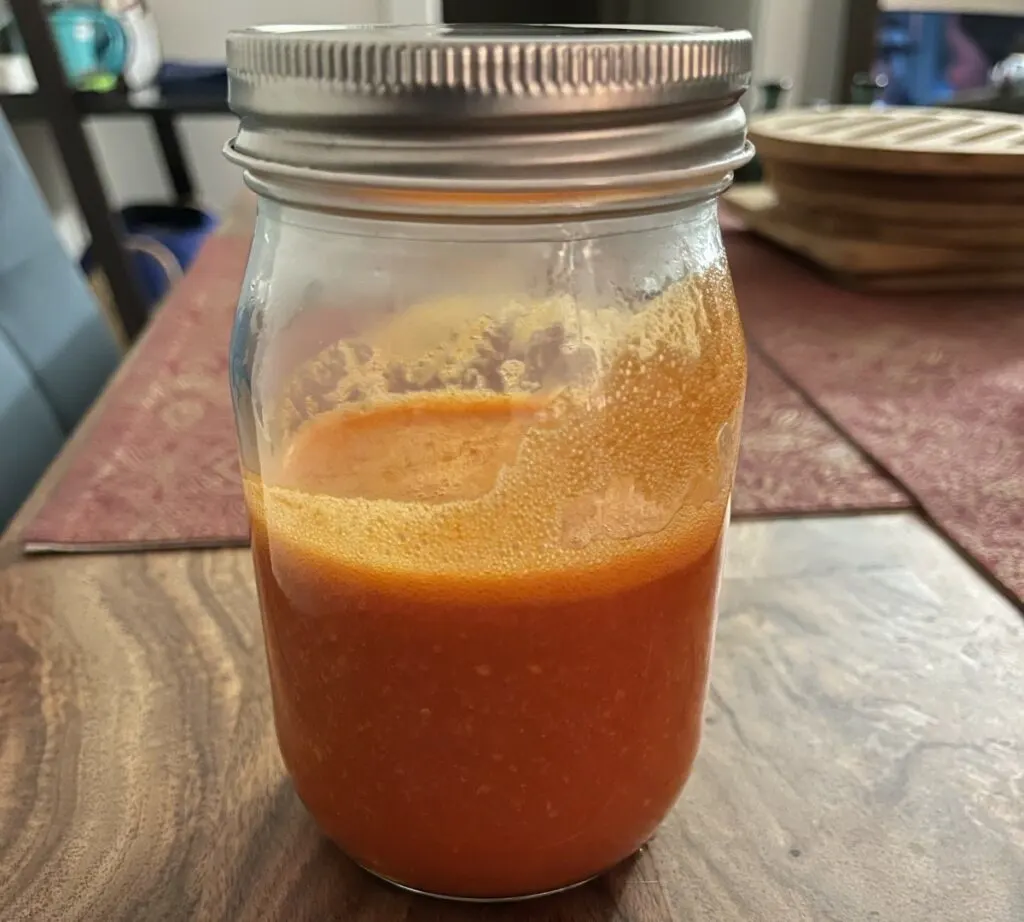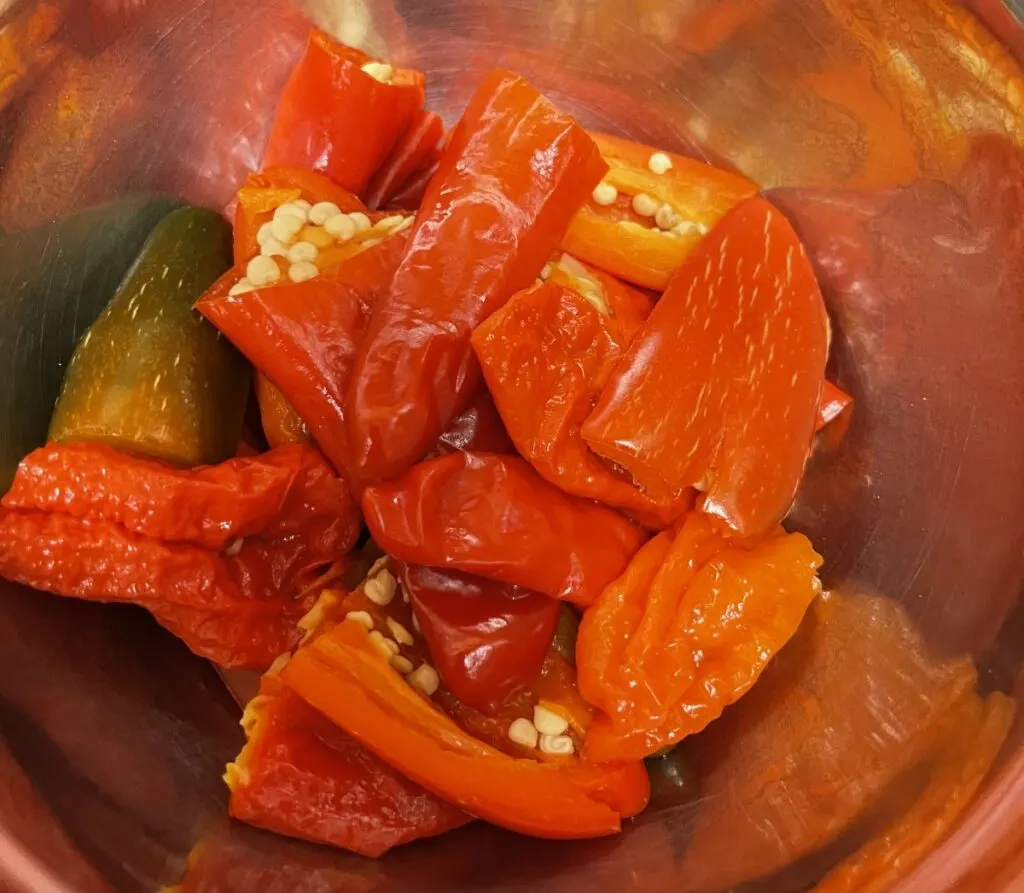Making your own hot sauce can be an exercise in creativity, allowing you to experiment with all sorts of flavors and aromas, from fruits to spices. And while you can take an “anything goes” approach for homemade hot sauce, there are specific rules you should abide by, especially regarding pH and shelf stability.
The pH level of hot sauce should be between 2.75 and 4 so you can consume it safely. You can test the pH level of your hot sauce by using pH meters. If you want to lower the pH level of your hot sauce, you can try adding acids like vinegar, and if you want to increase it, you should increase the alkaline ingredients, like baking soda or sugar.
In this post, we’ll explain why the pH level of your homemade hot sauce should stay below 4 and how to test it so that you know you’re on the right track. We’ll also explore ways to correct the pH level of your hot sauce if it’s not right.
As an Amazon Associate, I earn from qualifying purchases.

1. The pH Level Is Crucial to Ensure Food Safety
The level of pH (potential hydrogen) is an important aspect that should be taken into consideration, especially when making large batches of hot sauce that you intend to use for a long time.
What is pH?
The pH level is measured on a scale from 0 to 14 and is used to determine if a substance is acidic or alkaline. A pH level of 7 is considered neutral; anything below 7 is acidic, while anything above is alkaline.
Foods like tomatoes, vinegar, or lemons are acidic, which means they have a low pH. On the other hand, sugar, onion, and baking soda are alkaline, with a pH of more than 7. Depending on what ingredients you’re using, you can create a hot sauce that’s more acidic or alkaline. Typically, most hot sauces are acidic.
Why is the pH Level Important for Hot Sauces?
For hot sauces, it’s essential that the pH is on the lower side. High pH indicating an alkaline environment can be bad for the preservation, safety, and taste of the sauce, not to mention it can allow certain dangerous bacteria to grow.
Bottled homemade hot sauces can create an anaerobic environment that can be favorable for clostridium botulinum, the bacteria that causes botulism. However, if the hot sauce is acidic enough, these bacteria can’t grow, so your hot sauce will be safe to consume.
2. Homemade Hot Sauce pH Levels Should Be Below 4
Homemade hot sauce should always be acidic to be food safe. According to FDA regulations, the pH should always be below 4.6. This is the general rule for all hot sauce producers, including large industrial ones. Large producers have tried and tested recipes and very accurate ratios, not to mention high-end equipment that tests the pH levels of their hot sauce batches continuously.
The situation is different for someone who makes hot sauce at home, experimenting with recipes and using cheaper pH testing devices. Homemade hot sauce should have a preferably even lower pH than 4.6. 4 is thought to be a good ceiling to account for the fact that home tests may not be as accurate.
Therefore, you should aim for the pH levels of your hot sauce to be between 2.75 and 4. 3.4 is thought to be the sweet spot, although it is really up to your personal taste; some people prefer even more acidic sauces while others not so much.

3. Low-pH Hot Sauce is Shelf Stable
If you’re planning to store the hot sauce outside of a refrigerator, or you’re trying to sell it or gift it to people, you should make sure that it is shelf stable. This is especially important if you know you won’t be consuming all your hot sauce in a few days or storing it in the fridge.
The pH level plays an important role in the shelf stability of hot sauce. One reason why hot sauce can become spoiled and inedible is that different bacteria have found a way to develop within the sauce. But, the more acidic the sauce is, the less chance there is for bacteria to grow.
If you like less acidic hot sauces and want the pH to be above 4, and above the 4.6 recommended by regulations, you should consume the hot sauce quickly and store it in the refrigerator. If you’re cooking large batches to sell or gift, don’t take any chances. Use pressure canning to make sure your sauce is safe to consume.
4. You Can Test pH Levels at Home
You always need to ensure that your homemade hot sauce has the correct pH level, making it safe to consume and store for an extended time. No matter how well you think you know the nature of your sauce, you can’t be sure it’s safe until you know exactly what its pH level is, so don’t try to guess.
To make sure your hot sauce is safe, you should test the pH of every batch of hot sauce you make. There are several ways by which you could test the pH level at home. You could use a pH meter, which measures the pH level of the hot sauce with pretty good accuracy. Alternatively, you can use litmus papers, which are little strips of paper that change color to determine the pH.
Understandably, a pH meter is more accurate than litmus tests, especially if you have a high-end one. You can find great pH meters online, like the Hanna Instruments HI98103 Checker pH Tester, on Amazon.com. Whatever method you use, test frequently and make sure the pH level is below 4.
If you’re not satisfied by the accuracy of the home tests, you can test the pH of all your batches of hot sauce in a laboratory setting. Laboratory testing will remove all doubts about the pH levels of the hot sauce. If you aim for the pH level to be closer to the 4.6 ceiling and if you’re distributing your sauce to other people, it’s probably a good extra step to test the pH levels in a laboratory.

5. pH Levels Can Be Easily Corrected
While you’re experimenting with flavor profiles for your hot sauce, pH might not be at the forefront of your mind. While undoubtedly delicious, the result of your experiments might have a pH level that is either too low or too high.
A pH level that is too high is definitely a bigger problem in this case. Hot peppers are low in acidity, so when they are combined with equally alkaline ingredients, they can result in a hot sauce that is so low in acid it might not be safe to consume.
A pH level that is too low would mean that the hot sauce is pretty safe to eat in terms of bacteria protection, but it might have a taste that’s not pleasant for some people. Moreover, a hot sauce that is too acidic may cause harm to people with sensitive stomachs.
How to Lower the pH Level of Your Hot Sauce
To lower the pH level of your homemade hot sauce, you need to add acidic ingredients. The first idea that may come to your mind is probably adding more vinegar or lemon, and you would be right. Naturally, this would alter the flavor profile, but your hot sauce should still be delicious if the acid is added in a balanced ratio.
However, you can also try lowering the pH level by reducing the number of hot peppers in the sauce. Because peppers, in general, are more alkaline, they raise the levels of pH, so if you use less of them, you can make the sauce more acidic. This may also change the flavor and texture a bit, although you can always add more acidic ingredients, like tomato or pineapple.
If you don’t want to change anything about the flavor profile of your sauce, you need to get your hands on some specialty ingredients that are usually used in the food industry. Sorbic acid, for instance, would lower the pH level of your hot sauce without affecting the flavor.
If you’re fermenting your sauce, you should know that the process of fermentation lowers the pH of the hot sauce with time, which is good news. However, you should make sure the pH level is always within acceptable levels.
How to Increase the pH Level of Your Hot Sauce
If you’re well below the threshold I mentioned above and are not fond of the acidic sauce, you can try increasing the pH level for a more balanced flavor. As I explained above, all you need to do is add or reduce the amount of certain ingredients.
To increase the pH level of your hot sauce, you can try increasing the amount of your star ingredient, the hot peppers. As mentioned above, peppers have low acidity, so using more of them would increase the pH level of your hot sauce. As an extra step, you could try roasting them, enhancing their flavor, and increasing the pH level at the same time.
Additionally, you can use more water and reduce the amount of vinegar or citric juice in your hot sauce. You can also add other aromatics with high pH levels, like celery, onion, or garlic. You can also add fruits like mangoes or berries. Keep in mind, though, that it is crucial to ensure the pH level remains below 4.6 and, ideally, 4 for your safety.
Cooking your hot sauce down, while great for flavor enhancement, can slightly increase its pH levels. Always do a pH test after to make sure you’re within the safe range.
